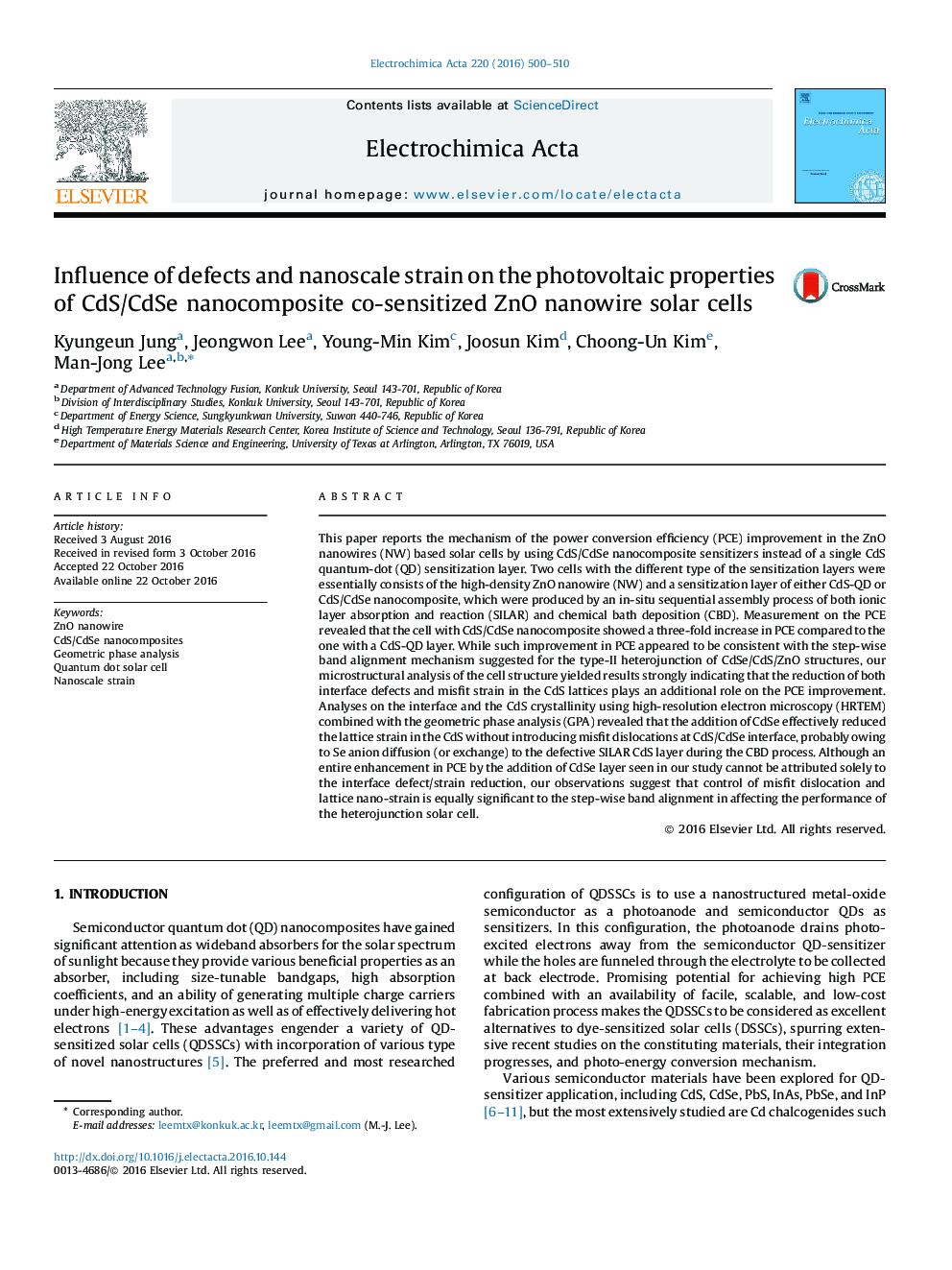| کد مقاله | کد نشریه | سال انتشار | مقاله انگلیسی | نسخه تمام متن |
|---|---|---|---|---|
| 6472404 | 1424137 | 2016 | 11 صفحه PDF | دانلود رایگان |

- CdSe/CdS nanocomposites were coated on ZnO nanowires using solution processes.
- In situ CdSe/CdS co-sensitizers resulted in a 3-fold increase in efficiency.
- Nano-strain analyses at interfaces and CdS layers were performed.
- Drastic decrease of nano-strain in CdSe/CdS was observed.
- Relaxed nano-strain was attributed to the increase of efficiency.
This paper reports the mechanism of the power conversion efficiency (PCE) improvement in the ZnO nanowires (NW) based solar cells by using CdS/CdSe nanocomposite sensitizers instead of a single CdS quantum-dot (QD) sensitization layer. Two cells with the different type of the sensitization layers were essentially consists of the high-density ZnO nanowire (NW) and a sensitization layer of either CdS-QD or CdS/CdSe nanocomposite, which were produced by an in-situ sequential assembly process of both ionic layer absorption and reaction (SILAR) and chemical bath deposition (CBD). Measurement on the PCE revealed that the cell with CdS/CdSe nanocomposite showed a three-fold increase in PCE compared to the one with a CdS-QD layer. While such improvement in PCE appeared to be consistent with the step-wise band alignment mechanism suggested for the type-II heterojunction of CdSe/CdS/ZnO structures, our microstructural analysis of the cell structure yielded results strongly indicating that the reduction of both interface defects and misfit strain in the CdS lattices plays an additional role on the PCE improvement. Analyses on the interface and the CdS crystallinity using high-resolution electron microscopy (HRTEM) combined with the geometric phase analysis (GPA) revealed that the addition of CdSe effectively reduced the lattice strain in the CdS without introducing misfit dislocations at CdS/CdSe interface, probably owing to Se anion diffusion (or exchange) to the defective SILAR CdS layer during the CBD process. Although an entire enhancement in PCE by the addition of CdSe layer seen in our study cannot be attributed solely to the interface defect/strain reduction, our observations suggest that control of misfit dislocation and lattice nano-strain is equally significant to the step-wise band alignment in affecting the performance of the heterojunction solar cell.
164
Journal: Electrochimica Acta - Volume 220, 1 December 2016, Pages 500-510